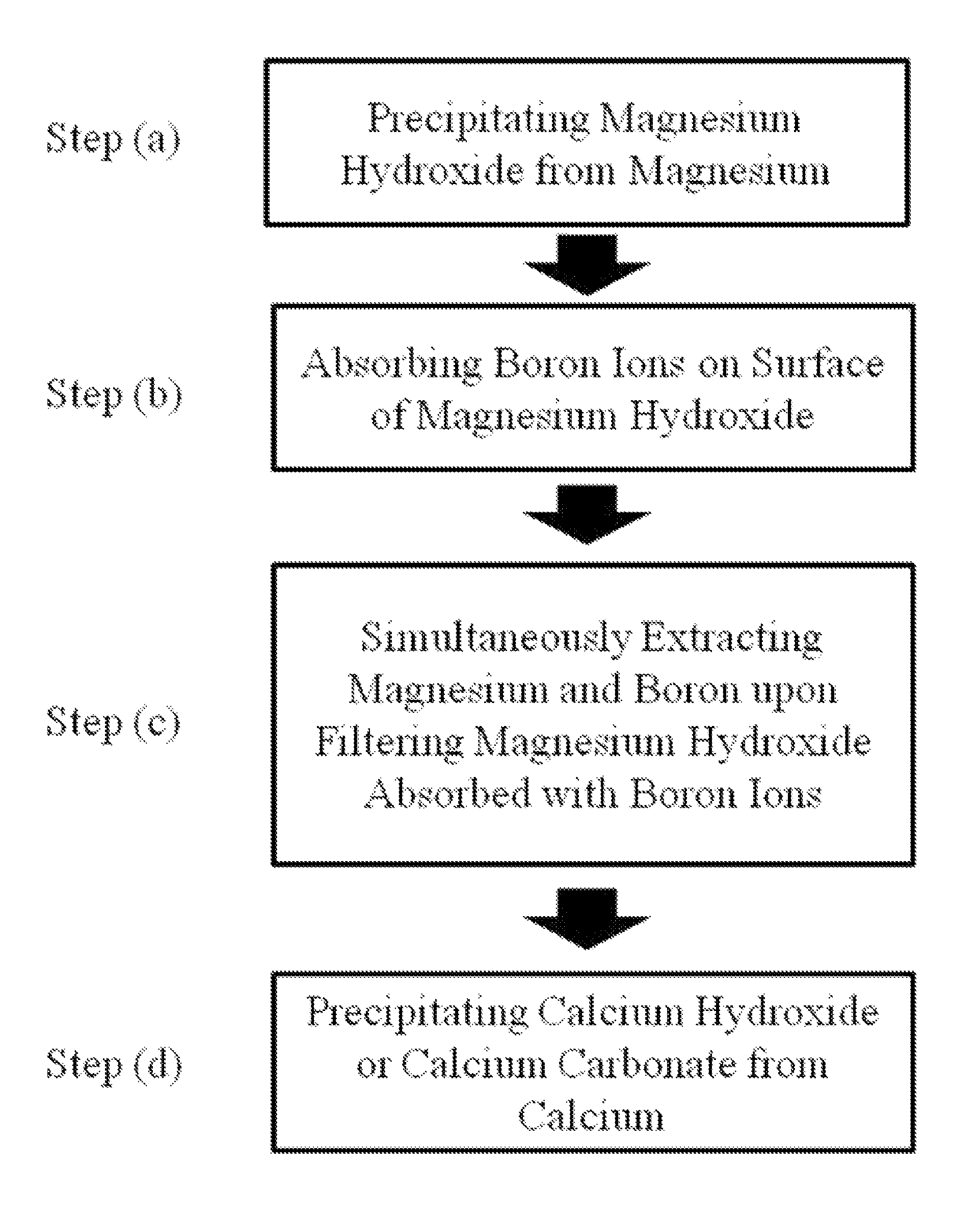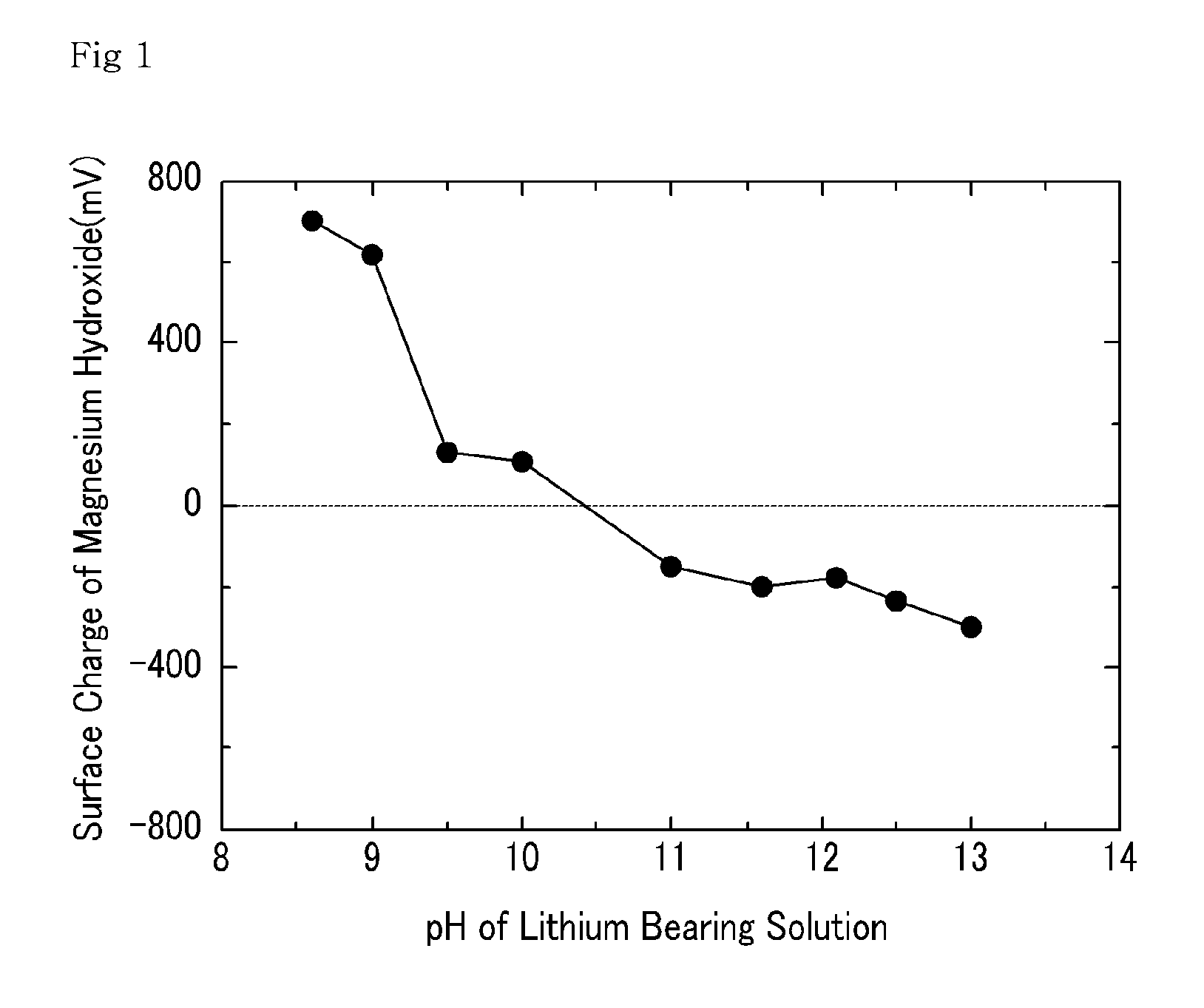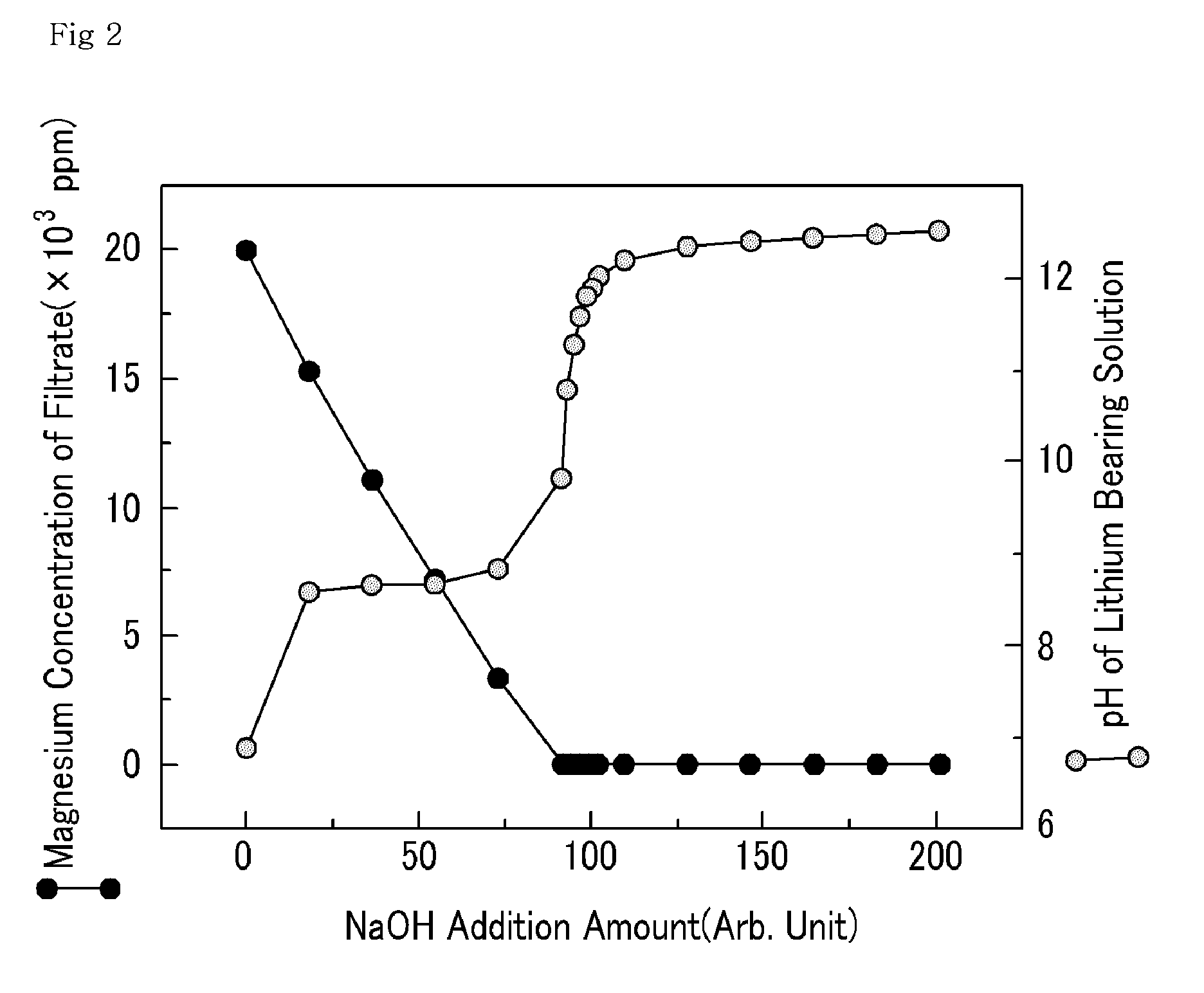Method for economical extraction of magnesium, boron and calcium from lithium bearing solution
a lithium bearing and magnesium technology, applied in the direction of magnesium compounds, lithium compounds, chemistry apparatuses and processes, etc., can solve the problems of substantial loss of lithium, inconvenient extraction of boron from lithium bearing solution, and substantial impurities
- Summary
- Abstract
- Description
- Claims
- Application Information
AI Technical Summary
Benefits of technology
Problems solved by technology
Method used
Image
Examples
example 1
[0040]NaOH was added to a lithium bearing solution containing magnesium ions 20,000 ppm, boron ions 900 ppm, calcium ions 350 ppm, and lithium ions 900 ppm to precipitate magnesium hydroxide. While adjusting the pH of the lithium bearing solution, the surface charge of the precipitated magnesium hydroxide was measured. The results are shown in FIG. 1.
[0041]As shown in FIG. 1, the surface charge of the magnesium hydroxide was maintained with a positive charge when the pH range of the lithium bearing solution from which the magnesium hydroxide was precipitated was between 8.5 and 10.5. Accordingly, the boron ions with a negative charge were easily absorbed, and the positively charged lithium ions were prevented from being absorbed. This minimized the loss of lithium, and efficiently extracted both magnesium and boron at the same time.
example 2
[0042]Various amounts of NaOH were added to a lithium bearing solution containing magnesium ions 20,000 ppm, boron ions 900 ppm, calcium ions 350 ppm, and lithium ions 900 ppm to precipitate magnesium hydroxide. The pH of the lithium bearing solution from which the magnesium hydroxide was precipitated was altered. Subsequently, a filtration was performed to separate the precipitated magnesium hydroxide from the lithium bearing solution. The filtrate was collected to measure the amount of magnesium, boron and lithium. The results are shown in FIGS. 2, 3, and 4, respectively.
[0043]As shown in FIG. 2, an increase in the amount of NaOH added had no significant impact on the pH of the lithium bearing solution in the beginning, because OH− ion was used for the production of magnesium hydroxide. However, a continuous increase in the amount of NaOH gradually decreased the magnesium amount in the filtrate, and as the OH− ion increased, the amount of magnesium decreased to 4 ppm once the pH o...
example 3
[0048]Various amounts of NaOH were added to a lithium bearing solution containing magnesium ions 20,000 ppm, boron ions 900 ppm, calcium ions 350 ppm, and lithium ions 900 ppm to precipitate calcium hydroxide from the solution containing calcium ions. A filtration was performed to separate the precipitated calcium hydroxide from the lithium bearing solution. The resulting filtrate was collected to measure the amount of calcium. The result is shown in FIG. 5.
[0049]As shown in FIG. 5, as the added amount of NaOH increased, the amount of calcium in the filtrate gradually decreased. When the pH of the lithium bearing solution reached 12, the amount of calcium was reduced to be 6.5 ppm, and 98% of the calcium ions dissolved in the lithium bearing solution was extracted. Accordingly, it is necessary to increase the pH of the lithium bearing solution to be at least 12 in order to enhance the extract yield of the calcium ions from the lithium bearing solution.
[0050]However, when the pH of t...
PUM
| Property | Measurement | Unit |
|---|---|---|
| pH | aaaaa | aaaaa |
| surface charge | aaaaa | aaaaa |
| purity | aaaaa | aaaaa |
Abstract
Description
Claims
Application Information
 Login to View More
Login to View More - R&D
- Intellectual Property
- Life Sciences
- Materials
- Tech Scout
- Unparalleled Data Quality
- Higher Quality Content
- 60% Fewer Hallucinations
Browse by: Latest US Patents, China's latest patents, Technical Efficacy Thesaurus, Application Domain, Technology Topic, Popular Technical Reports.
© 2025 PatSnap. All rights reserved.Legal|Privacy policy|Modern Slavery Act Transparency Statement|Sitemap|About US| Contact US: help@patsnap.com



